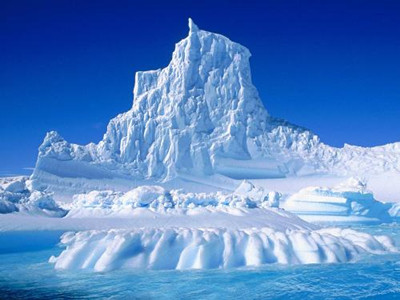南極洲
Core values
核心價值
The southern continent hots up
南方大陸熱鬧起來了
ANTARCTICA is 2,700km away. Yet as the brief austral summer fades, for Hobart, the capital of the Australian state of Tasmania, it is big business. The town is home to the Australian government's Antarctic Division and France's Antarctic programme. The two countries' ageing icebreakers are busy supplying their research stations. Australia is trying out a new research and supply vessel, which dwarfs its part of the harbour.
遠在2700公里的南極洲。隨著南半球夏天的離去,澳大利亞塔斯馬尼亞島霍巴特迎來了大生意。澳大利亞政府南極洲研究部與法國南極洲考察項目駐扎在此。兩國積極為其研究站提供技術成熟的破冰船。澳大利亞開展一項新的研究,研發供給船,這使其港口相形見絀。

In early January the Falkor, a research vessel funded by Eric Schmidt, chairman of Google (and a member of The Economist's board), steamed into Hobart. Its research budget would quicken the pulse of any ocean scientist, and the Institute for Marine and Antarctic Studies at the University of Tasmania threw a party for the crew. Among other topics, the institute's researchers are studying why the Earth is warming more slowly than models predict. One reason could be the cold Southern Ocean, a powerful climate regulator.
早前一月初,谷歌執行總裁埃里克·施密特資(同時也是該雜志董事會一員)助了一艘名為Falkor的研究船駛向霍巴特。該船研究預算讓海洋科學者心跳加快,而且塔斯馬尼亞大學海洋與南極洲研究中心為船員們開了派對。該中心的研究課題還有為什么地球變暖速度低于先前模型的預測。其中原因之一可能是寒冷的南大洋能有力的調控天氣變化。
Though there are (disputed) territorial claims, the 1959 Antarctic Treaty sets Antarctica aside as a scientific reserve. States assert themselves by building bases and planting flagpoles. The dozen original signatories have swelled to 50, including India and South Korea. China, which signed up in 1983, has the fastest-growing presence. Some 350 features now have Chinese place-names (there is even a Great Wall).
雖然領土爭端仍然存在,1959年簽訂的南極條約使其成為了科學保留地。各國通過建立考察站升起國旗展示國家能力。原始締約國大約十幾個,現在升至50個,其中印度,韓國,中國在1983年簽署加入,并成為了發展速度最快的國家。350個左右的地點是以中國地名命名的(其中包括長城站)。
China's annual Antarctic spending has grown from $20m to $55m in a decade, and it has five bases. Its Ukrainian-built icebreaker, the Xue Long (Snow Dragon), shuttles between the Arctic and Antarctic summers, and will be joined in 2016 by a new vessel. Yet co-operation remains essential in this remote and hostile environment, and it relies on Russia and Australia for help with logistics and supplies.
中國每年在南極洲花費從10年前的2千萬美元到5千5百萬美元,中國現在有五個科學考察站。烏克蘭建造的雪龍號破冰船,在夏天,往返于北極和南極。2016年會配備一艘新船。然而,在如此遙遠與惡劣的環境中,合作是極其重要的。雪龍號的后勤和供給都要依靠俄羅斯和澳大利亞。'
China's long-term interest may be in resources. But mining has been banned in the Antarctic since 1998, and that would be hard to change if most countries active there resisted it. For now, scientists in Hobart say the Chinese are doing impressive research. Most ambitious is an attempt to drill 2.5km into Antarctica's highest ice dome. Trapped air may reveal the secrets of 1.3m years of climate change. But extracting samples without contaminating them is only one of many challenges. And, whisper Australian scientists gleefully—for co-operation has its limits—the Chinese may not be drilling in the best place.
資源是中國長期利益出發點。但是1998年起,南極洲就禁止采礦,如果那里活躍的大多數國家反對開采的話,這個現狀很難改變。目前,霍巴特的科學家中國的研究讓人吃驚。其中在南極洲最高的冰穹鉆入2500米的嘗試非常有野心的。收集的空氣可能揭示130萬年前的氣候變化的秘密。但是采集的樣本如何不受到污染也是眾多挑戰之一。其中一位澳大利亞的科學家幸災樂禍的小聲說,合作也意味著限制。中國就無法在最佳的地方鉆探。翻譯:劉苗苗 校對:于玉涵












